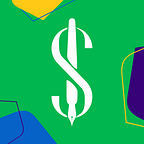Canada celebrated a $100 billion mark — but not for the reason you think!
In their latest report, TransUnion Canada revealed that the outstanding credit card balances of Canadians passed the $100 billion mark, as Canadians continue to borrow from banks and rack up debt on their credit cards. The report stated that an increasing number of Canadian consumers face economic pressure or feel financially distressed, and ultimately leading to their financial credibility to worsen with each missed payment. Individuals generally tend to keep a good standing on payments such as mortgages, telephone bills, automobile payments, and other services they deem necessary for their daily lives. However, they neglect their credit card payments, and this delay consequently adds to the amount they need to pay. The ongoing debt problem is distressing, but acknowledging why people acquire loans, is as important as the reason behind how it turns into a growing problem throughout Canada.
For most Canadians, acquiring a loan is a necessary step to take when one does not have the financial means to afford certain products or services. Borrowing can help someone get a higher education, buy a new car, or purchase a home, some of which may act as a long-term investment. Debt is a tool that allows people to smooth out their spending throughout their life, and people generally do not go into debt, knowing that they will not be able to pay it back. However, a recent survey suggested that two in one indebted Canadians don’t expect to escape debt in their lifetime, which is mostly due to the exceedingly high interest rates, especially of credit cards. Although credit cards offer the convenience of buying now and paying later, the high-interest rates can overwhelm borrowers, making it impossible to pay off their debt.
Currently, Canadians owe $2.16 trillion in household debt, including mortgage and non-mortgage debts (ex. auto loans, credit cards, and personal loans). Also, as a share of gross domestic product, Canada has the highest debt load in the Group of Seven economies. The debt service across the nation is lower for mortgage debts than for non-mortgage debts, as rates are much lower in comparison to loans acquired for credit cards. Consequently, Canadians end up owing $1.77 for every $1 they make, and various reports stated that nearly half of Canadians would not be able to cover basic living expenses without taking on new debt.
All debt can be disconcerting, but credit card debt can be especially challenging to climb out of as interest rate can be as high as 22% or more, and when the outstanding debt load increases, the interest amount paid can be astronomical. Even one missed payment can put you in a precarious situation with your finances, which will only worsen with each missed payment as your outstanding debt load will continue to inch higher. Furthermore, a study found that 75% of Canadians carry a balance on their credit cards each month, resulting in several thousand dollars of interest each year.
A report also showed that women are more likely to have growing debt due to lack of income (35 percent of women versus 28 percent of men). They are also more likely to struggle to save for a major purchase (75 percent women versus 70 percent men), afford grocery bills (33 percent women versus 24 percent men), and take a vacation (70 percent women versus 63 percent men).
It’s no secret that credit card debt is an ongoing problem in Canada, considering how easy it is to get caught up in paying with plastic rather than with cash. However, once someone gets trapped in the high-interest rate that typically comes with credit cards, it can be incredibly challenging to pay them down as the debt also increases with each missed month. According to the debt survey released by Manulife Bank of Canada, 45 percent of Canadians said their spending is rising faster than their income. More than half (55%) of Canadians reported considerable non-mortgage debt, which is 9% more than last year. Also, 60% of interviewees stated that they have credit cards carrying a balance, up from 48 percent in the spring. These numbers are enormous, and unfortunately, the trends suggest they will only get higher with each passing year.
High-interest debt from credit card loans makes it increasingly challenging to manage your finances. But if you’re a homeowner, you can take advantage of your home’s equity by obtaining a private mortgage. Since private mortgage rates range from 6–12%, and credit cards and other high-interest debts range from 19–20%, it is smarter and more profitable to get a private mortgage, pay off your high-interest debts, and then pay off the mortgage at your own pace. The mney.ca platform has individual and institutional lenders who compete to provide better rates for borrowers. MNEY can help you get a private mortgage with lower rates, so you never feel like you’re drowning in debt ever again!
Read this article on our blog.
